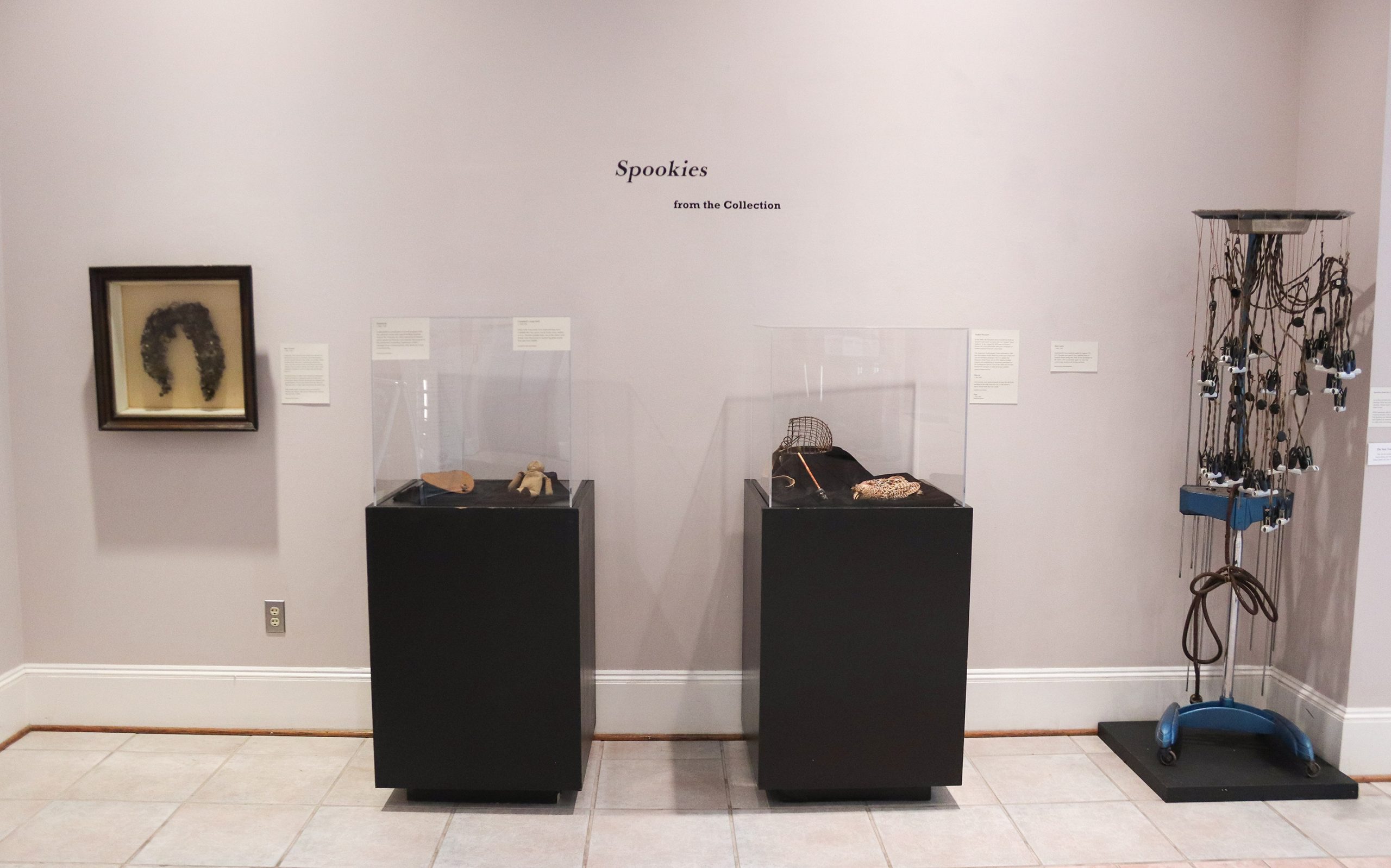
Written by Meghan E. Gattignolo
Halloween is almost here, and that means one thing – it’s spooky season! The Customs House Museum & Cultural Center’s collections team, Anna Woten and Kate Tallman, have curated a wonderful selection of odd and mysterious items to make your skin crawl, on display now in the Museum Lobby. Here’s just a peek at what you can see.
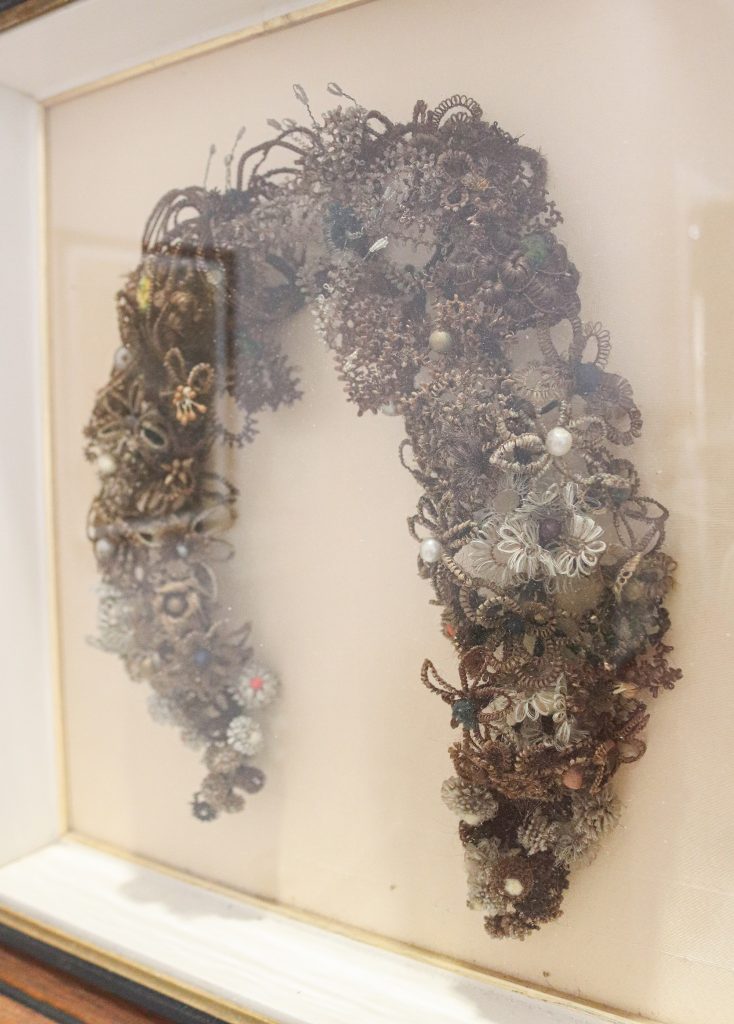
Hair Wreath c. 1885-1900
From the Museum’s Collections
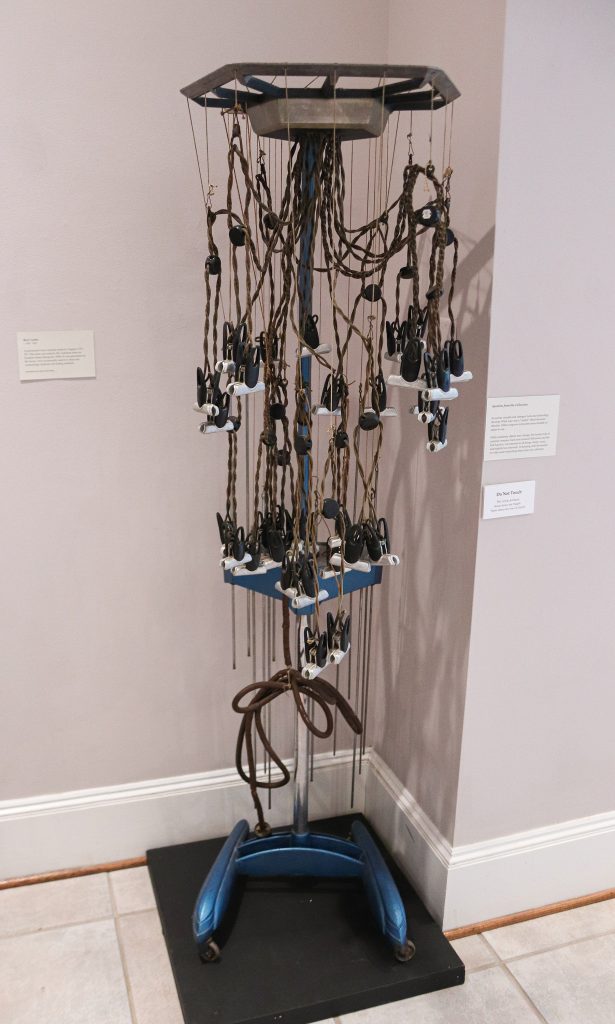
Hair Curler c. 1925-1935
From the Museum’s Collections
Hair Heirlooms
Crafting with hair was a common pastime throughout the 19th century, though it seems weird to us now. Creating hair crafts like this wreath was a way to remember someone, as a memento of your time together. Sometimes wreaths were made to honor deceased loved ones, but women often made them as a keepsake to remember good times with friends. This hair wreath was made between 1895 and 1900 by Martha Jane Hogue.
What may look like a terrifying machine of electrifying torture is actually a permanent wave machine. Using a machine like this was one way women could get those trendy waves set into their hair during the 1920s and 30s. This particular contraption was used around the corner at the Cushman department store on Franklin Street during the 1930s.

Portrait of Andrew Hughes c. 1899-1903
From the Museum’s Collections
Posthumous Paintings
Much like the painting of the Porter children on display on the Museum’s Lower Level, this portrait of a little boy was painted after he passed away. The sad little boy in the painting is Andrew Hughes, child of J.J. and Betty Hughes, at only three years old. What we would now consider a morbid practice, painting children after they had passed away was a comfort to parents who probably had few or no likenesses of their children made while they were alive. During the 19th century, photographs were the cutting edge of technology and a wiggly child wouldn’t be willing to sit still long enough for either a photograph or a painting. Most families didn’t have it in their budget to get a yearly family portrait done, and these were reserved for special occasions.
Frightening Figures
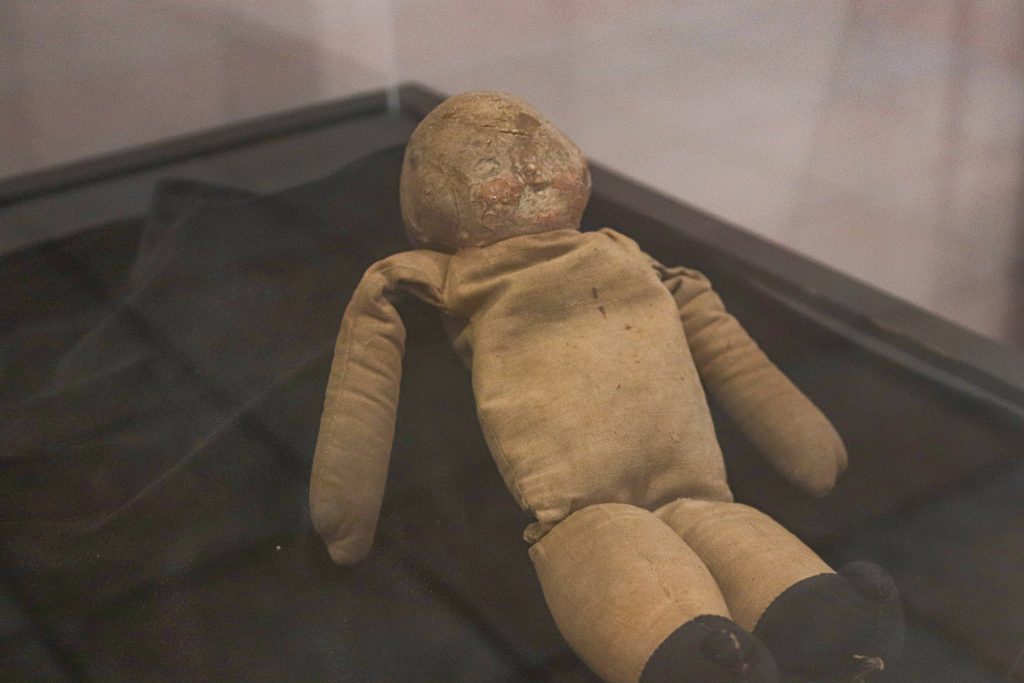
The Museum boasts a wide range of dolls from throughout the past 200 years. This mid-20th century Campbell’s Soup doll has seen a lot of use. The Campbell Kids were part of a long-lived marketing campaign for Campbell’s Soup, and the dolls became extremely popular. Over the years, dolls in general have become creepier as doll faces have become more expressive, and this doll is no exception.
Campbell’s Soup Doll c. 1920-1950
From the Museum’s Collections
Spiritual Subjects
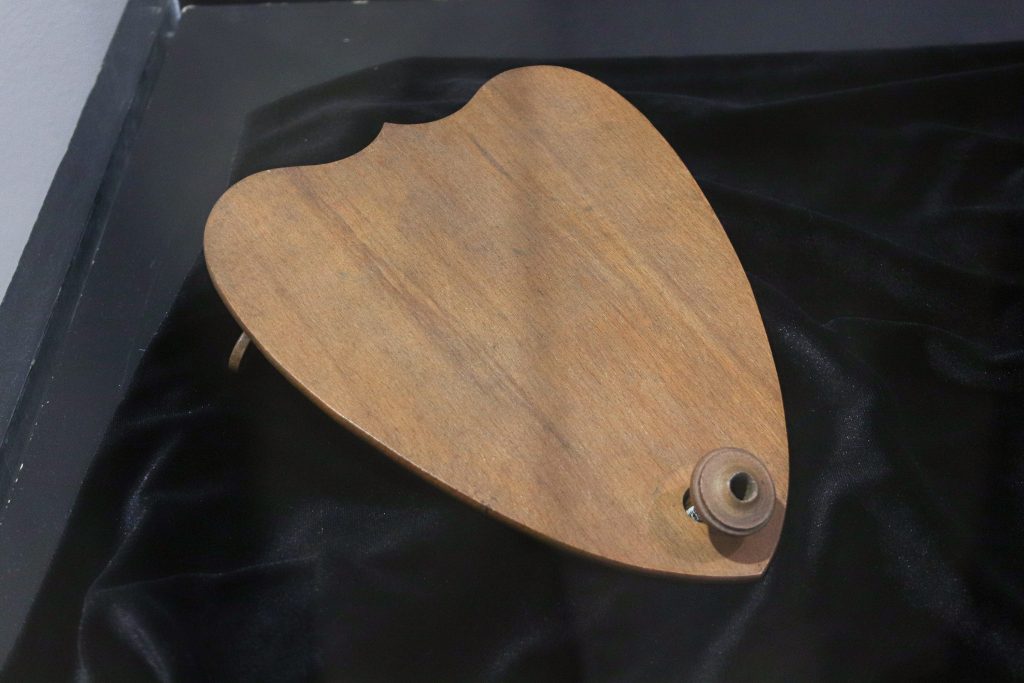
This planchette, made in the late 19th century, was modeled after an 1860 design. Planchettes (French for “little plank”) are better known now for their inclusion in Ouija board sets, but they were often sold alone as a tool to accommodate automatic writing. A person acting as a medium could attach a pencil to the planchette and a ghost could write out words on paper using the medium to move the planchette around. The spiritualism movement of the late 1800s saw many implements being marketed and sold to accommodate the rising popularity, with celebrities like Sherlock Holmes creator Sir Arthur Conan Doyle getting involved in the craze. Tools like this one were sometimes marketed as scientific, so both the superstitious and the logic-minded were curious to try talking with ghosts.
Planchette c. 1889-1920
From the Museum’s Collections
Come take a peek at the exhibit to see these pieces (and more!) up close. Which items creep you out the most? Spookies From the Collection is on display in the Museum Lobby until November 6.

Meghan E. Gattignolo
Meghan E. Gattignolo is a freelance writer and longtime Clarksville, TN resident. She loves to obsess about historical subjects and annoy her family daily with unsolicited random facts. Meghan holds a History B.A. from Austin Peay State University and lives in town with her husband and two daughters.
Becky Wood, Technical Writer, edits each blog post. Maegan Collins, Marketing Communications Manager, prepares photographs and visual images as well as prepares the blog posts for the web.